As a garden designer and soft landscaper, I’ve put together my fair share of beautiful borders, planting countless spring bulbs, small pots and bareroot roses. But recently my imagination has been set alight by a completely new way of creating riotously colourful beds of herbaceous plants, with a planting style and process known as a seeded perennial meadow (SPM). You may have seen SPMs used to amazing effect by Professors James Hitchmough and Nigel Dunnett at the Queen Elizabeth Olympic Park, created for the 2012 London Olympics. Since then, SPMs have started popping up in botanical gardens, such as Oxford and RHS Garden Wisley, and large charity-held estates, including Chatsworth House.
What is an SPM?
An SPM is, in short, an area of dense planting that returns every year, composed of herbaceous perennials and grasses, grown predominantly from seed sown directly on to a prepared substrate. SPMs are markedly different from our UK native meadows. Most keen gardeners will be familiar with grass-dominant native UK meadows and can recognise wildflowers like knapweed, ragged robin and (sometimes) rare wild orchids. We mark the seasons with their arrival in May, and their mowing at the end of the summer.
Download our document with the exact seed quantities you need
SPMs are designed to stay standing for the whole growing season, with flower colour starting in April, and running right through to autumn, providing more beauty and cover for wildlife than any standard native meadow. When designing an SPM, I’m looking to create a high degree of density within the planting, as well as variety in leaf textures, and distinctions between different height layers. Regular UK meadows typically grow to a single height – imagine walking through thigh-high pasture. SPMs, on the other hand, usually have around 80-120 plants per square metre, with clear layers of planting and much more diversity in height, with some of the flowers reaching above head height.
Choosing the right plants
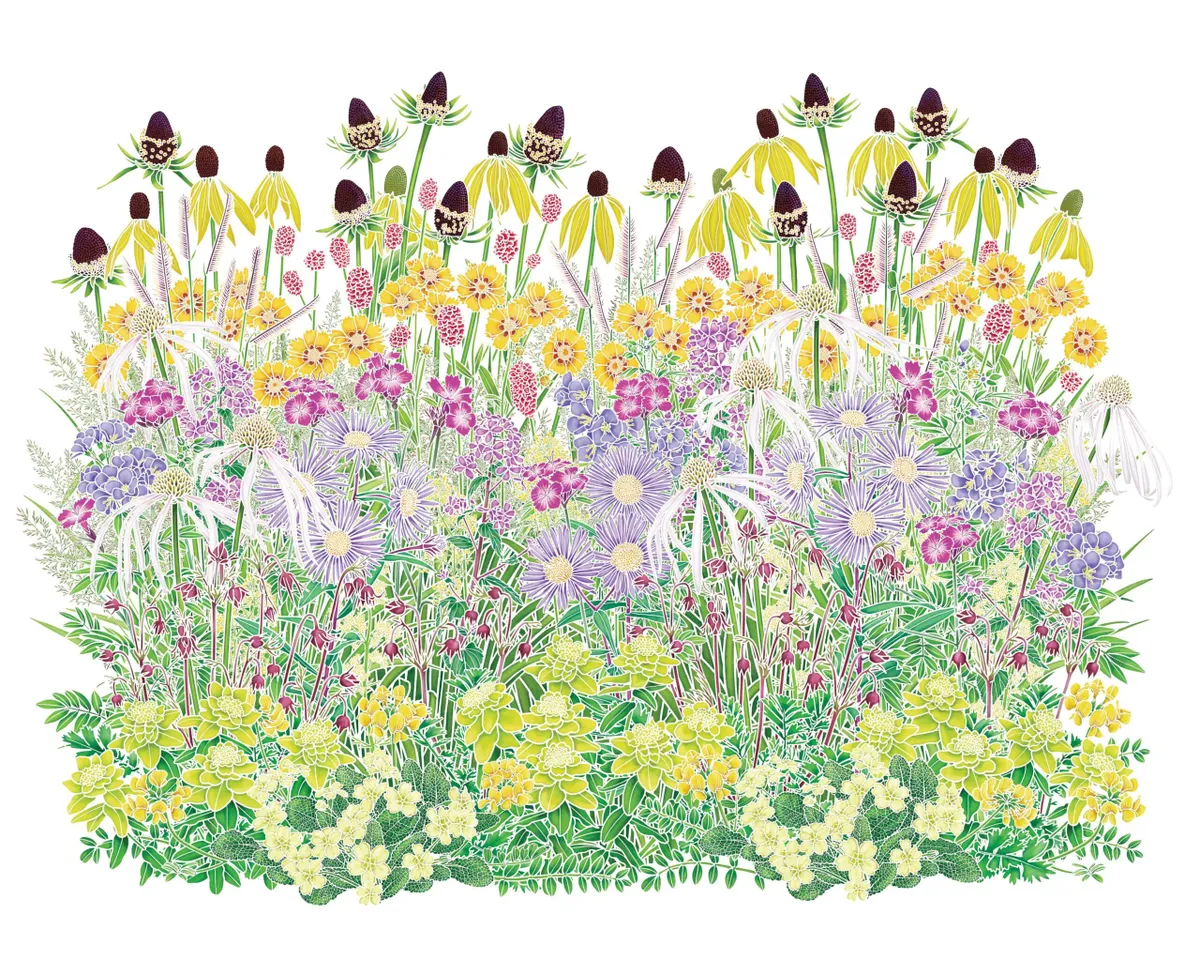
When putting together a seed list for an SPM, I draw on plants from around the globe, taking inspiration from landscapes ranging from the North American prairies to the South African Drakensberg. Each of these plants has evolved to exploit different niches, to grow and flower at different times of the year. By combining them in the right proportions, it’s possible to create an exotic and unique display that flourishes throughout the growing season. This is no easy task, considering we must whittle down the thousands of species available to create a seed list of around 20-25.
Download our document with the exact seed quantities you need
First, it’s important to remember that we shall be broadcasting this seed directly on to open ground, so plants must be able to germinate in our specific climate and hardiness area – in this case, the UK. James Hitchmough’s book Sowing Beauty is full of data on this aspect and is the first port of call for anyone looking to create their own SPM. Second, we want strong-growing plants, able to seed and reproduce successfully. Because of this, I have avoided fussy cultivars and any species with double flowers. Consider how the border will develop over time. It’s no use creating a beautiful mix of slow-growing perennials, only to add in a handful of quick, bulky annuals.

The border would soon be overrun by one or two species. We need balance, so it helps to organise potential plant choices into one of three groups based on their growth strategies: competitors, ruderals and stress-tolerators. Competitors grow big and bulky, physically dominating space and monopolising water and light – think of Echinops. Ruderals have short life cycles but seed prolifically, so jump around with ease – poppies, for instance. Stress-tolerators grow low and slow and are adapted to extreme conditions. When frost, fire or floods sweep through the land, these are the last plants standing – many Carex species show these attributes.
A successful border that is stable yet can surprise and delight each year comes from a mix of these three plant groups. It’s like putting together the perfect dinner party. You wouldn’t just invite all your quiet friends; you need a mix of talkative and thoughtful people to have the best conversation. With an SPM, you should think of plants less as individuals and more as a plant community, considering how the plants interact and relate to one another.
Each growing season you’ll see something different. I was inspired to see plants in this way after learning about the National Vegetation Classification system at college. Each UK habitat can be categorised as belonging to one of 286 communities, with each community containing 15-20 species commonly found together in that habitat. SPMs capitalise on the fact that plants across the globe have evolved to grow in groups.
How to sow your SPM scheme
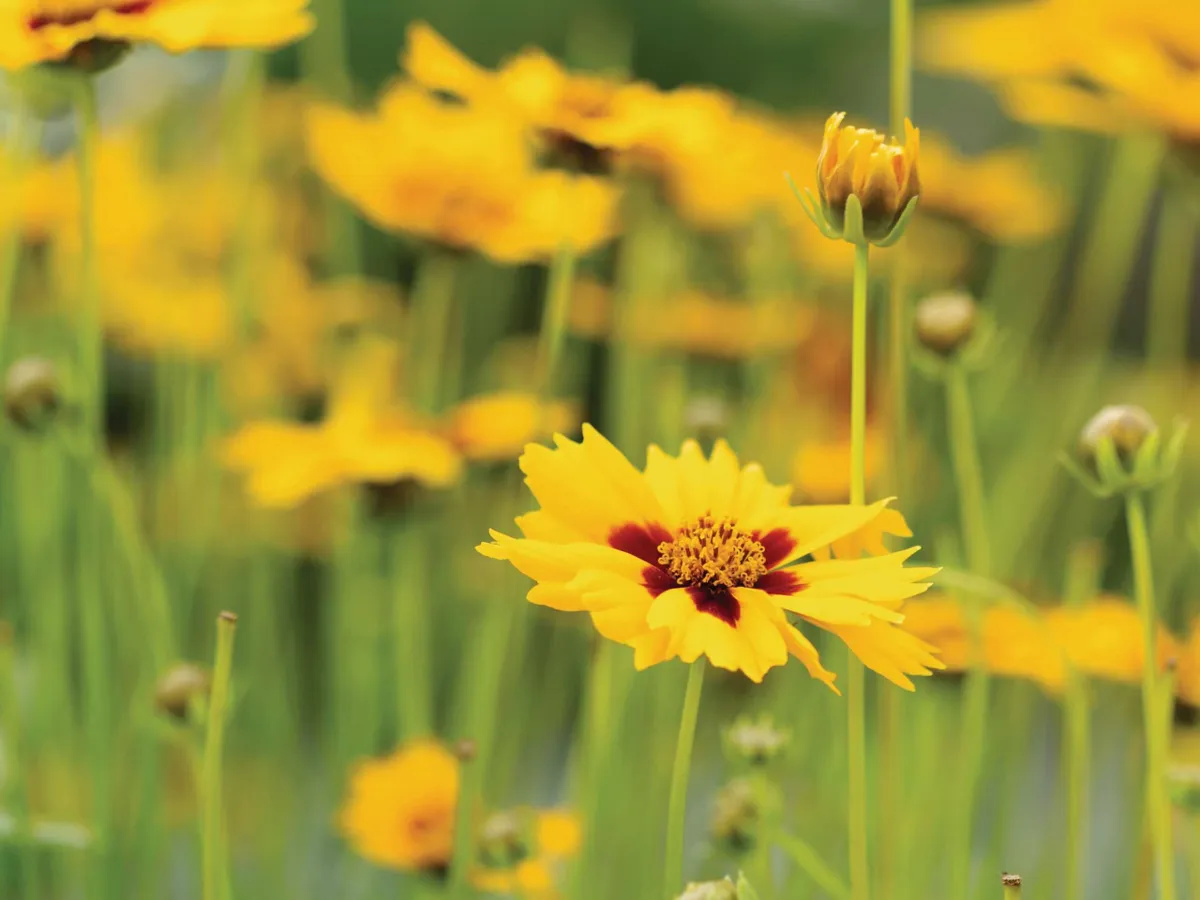
Once you’ve created your mix, it’s then time to prepare the area for seeding. As with any seeded area, the largest threat to your mix will be from weeds. It’s for this reason that I start by spreading a 12cm layer of seeding mulch, a sterile material such as PAS100 composted green waste or sharp sand, to help suppress weed seeds.
I recommend sowing in spring, mixing the seeds with dampened sawdust to help sow them evenly, and then lightly raking over the area afterwards. Water the area every three days without rain from late March to late May and stay vigilant for slugs in year one. Slugs love nothing more than fresh, young, leafy growth, so your SPM will be like a buffet for them.
To keep slug numbers low, I recommend a multi-pronged approach. Along with monthly nematode drenches and picking slugs off by hand, I suggest that every now and then you leave a damp sheet of cardboard laid down overnight. This seems to be an irresistible sheltering spot, particularly for herbivorous slugs – in the morning it’s simply a case of shaking them off into the garden bin. Also, be watchful for weeds that are blown in or arrive in bird droppings.
Download our document with the exact seed quantities you need
Aftercare
You can look forward to a small amount of flower in year one, but most plants will be establishing roots, so it’s really from year two that the show starts to kick off. We cut our SPMs down to the ground with a hedge trimmer just before the frost catches them in late autumn.
Other than that, my advice for aftercare is to maintain a balance between your plant types using common sense. If your competitors are taking off, give them a Chelsea chop in May. If your ruderals aren’t moving about, shake the seedheads across the border. You can also underplant the scheme with bulbs for interest early in the year – anything that flowers from late February to late March, especially crocuses, as well as Iris reticulata, species tulips and early daffodils. Your SPM border will be delightfully dynamic, and it’s up to you how much you allow it to develop and change over time.
An exclusive SPM scheme for Gardens Illustrated

This exclusive seeded perennial meadow scheme for Gardens Illustrated readers is intended for a border or bed of about ten square metres, but can be adapted to a larger area. I designed it to peak in July and August with sizeable perennials and hot-coloured flowers, but it will provide interest throughout the growing season.
The mix kicks off in mid-spring with low hummocks of colour coming from primulas, Euphorbia and polemoniums. These latter two stress-tolerators, along with geums and heucheras, will go on to form the groundcover through the rest of the season.
In May, the crowns, grasses and perennials all knit together, creating a carpet through which will dance some familiar meadow ruderals, such as fox-and-cubs (Pilosella aurantiaca), honesty (Lunaria) and lady’s bedstraw (Galium verum). In summer, the competitors really start to take off, with the textures of warm-season grasses, the structures of Berkheya and Knifophia leaves and the filigree of fennel foliage. These plants create a gauzy framework through which the towering coneflowers of Rudbeckia and Ratibida can grow and shine out in late summer.
Download our document with the exact seed quantities you need
Key plants for a seeded perennial meadow
Primula vulgaris

The pale-yellow flowers of the wild primrose provide welcome colour very early in the year. Height and spread: 20cm x 10cm. AGM*. RHS H7, USDA 4a-8b†.
Euphorbia epithymoides

Perennial that forms a mounded shape. Masses of acid-yellow flowers in spring. 40cm x 40cm. RHS H6,
USDA 4a-8b.
Lunaria annua
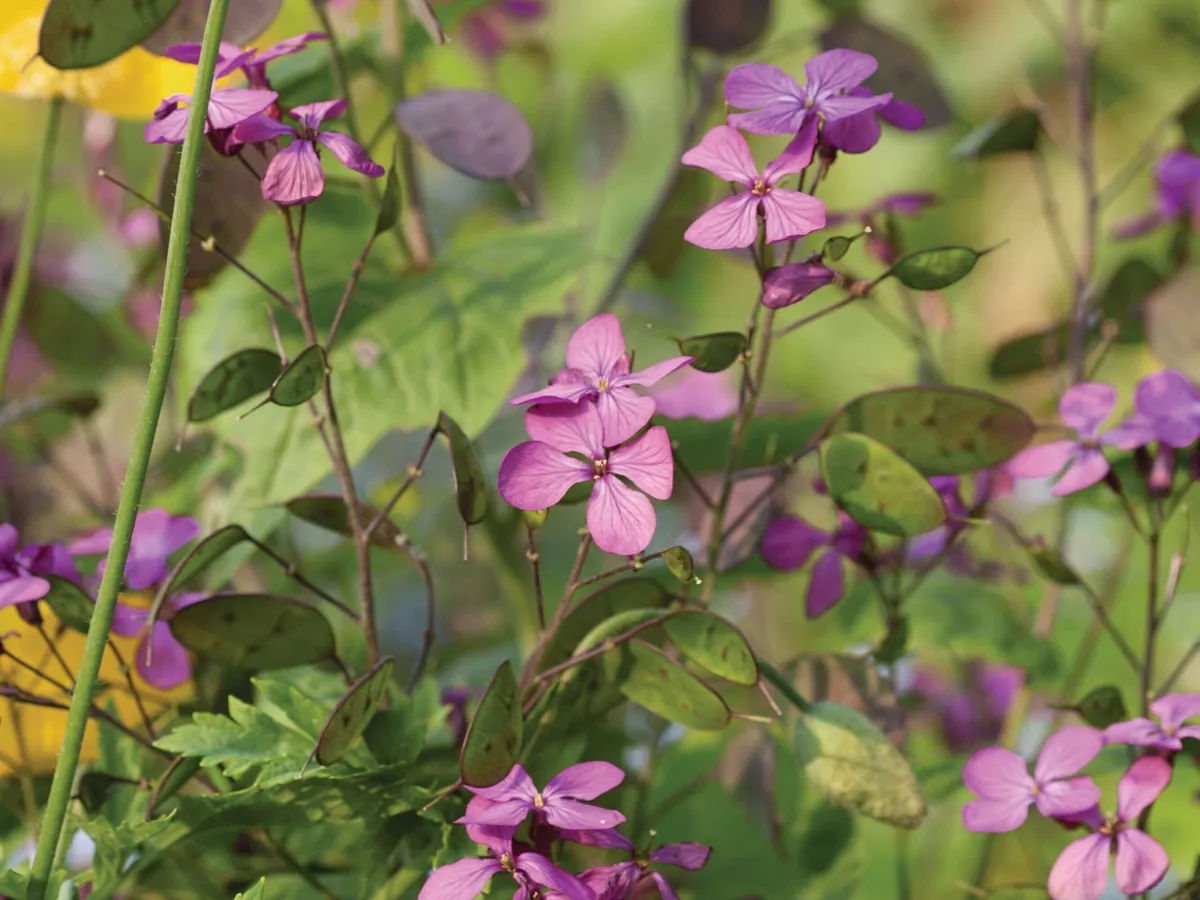
Honesty. Purple flowers in late spring and early summer, followed by silvery seedpods. 75cm x 50cm. RHS H6, USDA 5a-9b.
Polemonium caeruleum
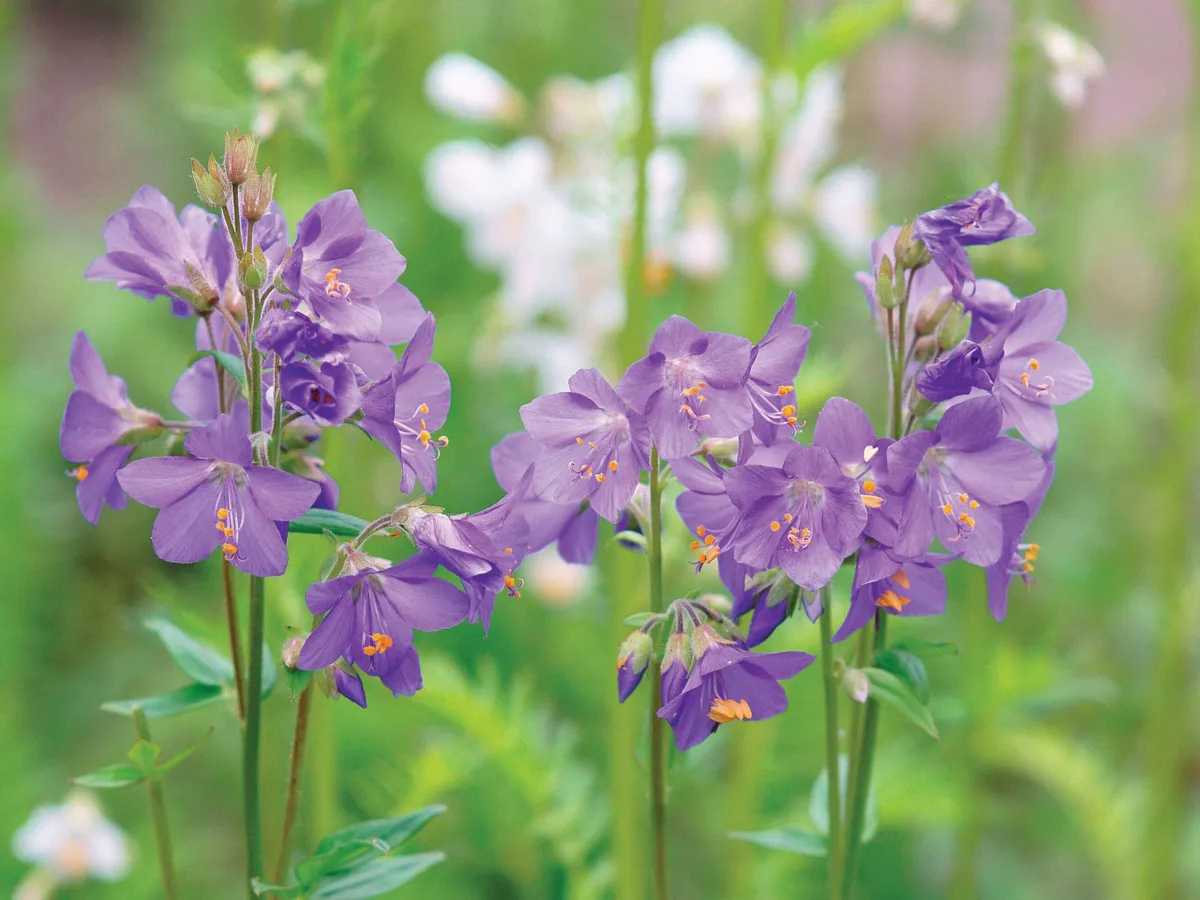
A tall perennial bearing sprays of sky-blue, bell-shaped flowers in early summer; self-seeds freely. 80cm x 50cm. RHS H7, USDA 4a-8b.
Hippocrepis comosa

Low-growing perennial with yellow, pea-like flowers from May to July. Also known as horseshoe vetch. 10cm x 10cm.
Galium verum
Perennial wildflower that bears a froth of sweetly scented flowers in summer. 50cm x 50cm. RHS H7, USDA 4a-8b.
Pilosella aurantiaca

Bears small, dandelion-like flowers in shades of russet in summer. Also known as fox-and-cubs. 30cm x 1m. RHS H5.
Dianthus carthusianorum

Magenta flowers with fringed petals from summer to autumn, above grassy foliage. 40cm x 40cm. RHS H7.
Melica altissima ‘Atropurpurea’
Deciduous grass that forms clumps of soft-green foliage topped in midsummer by pinky-purple flowers. 80cm x 50cm. RHS H6.
Geum triflorum
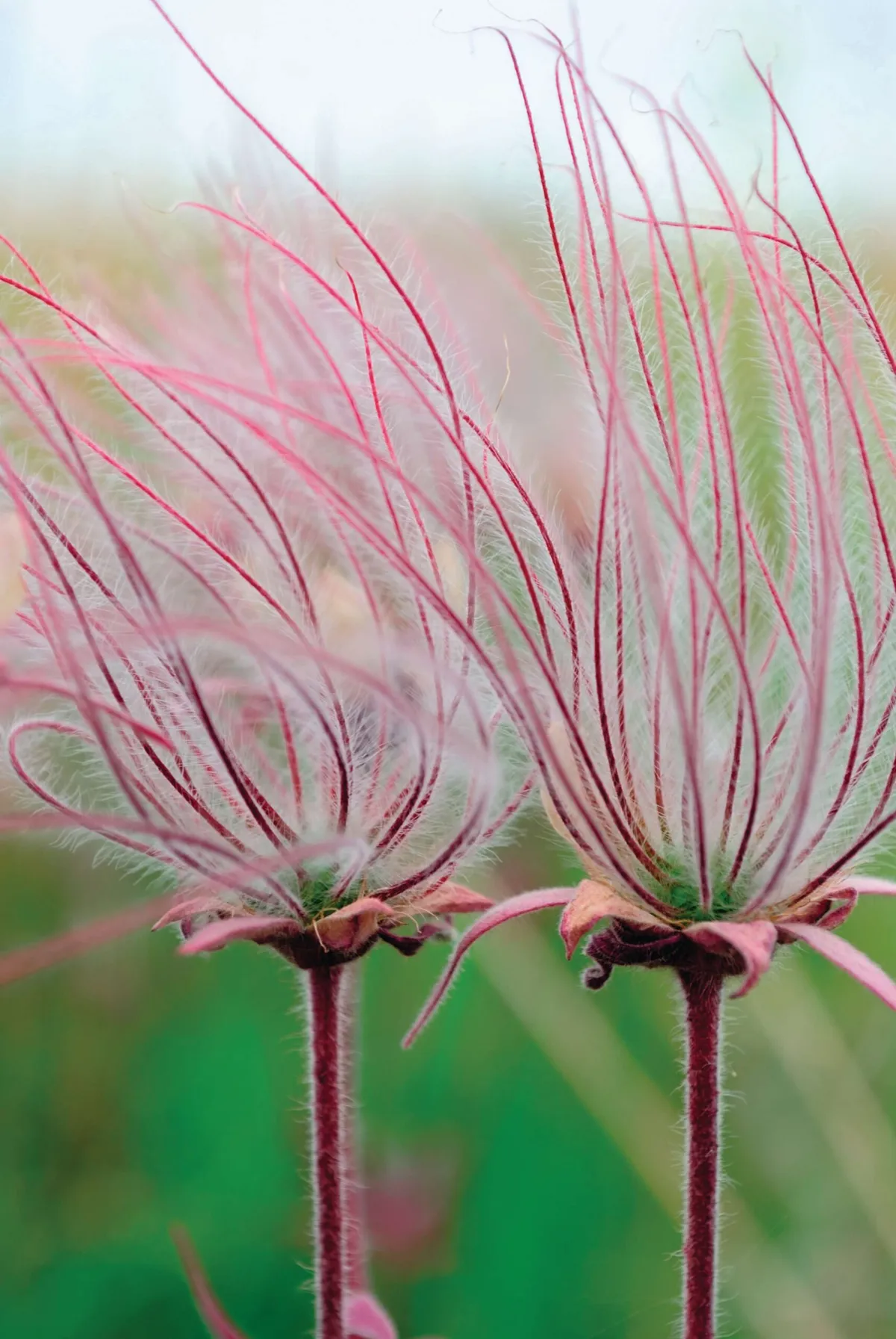
Attractive, hairy, ferny foliage. The nodding red flowers are followed by feathery seedheads. Also known as prairie smoke. 45cm x 45cm. RHS H7, USDA 3a-7b.
Kniphofia ‘Grandiflora’
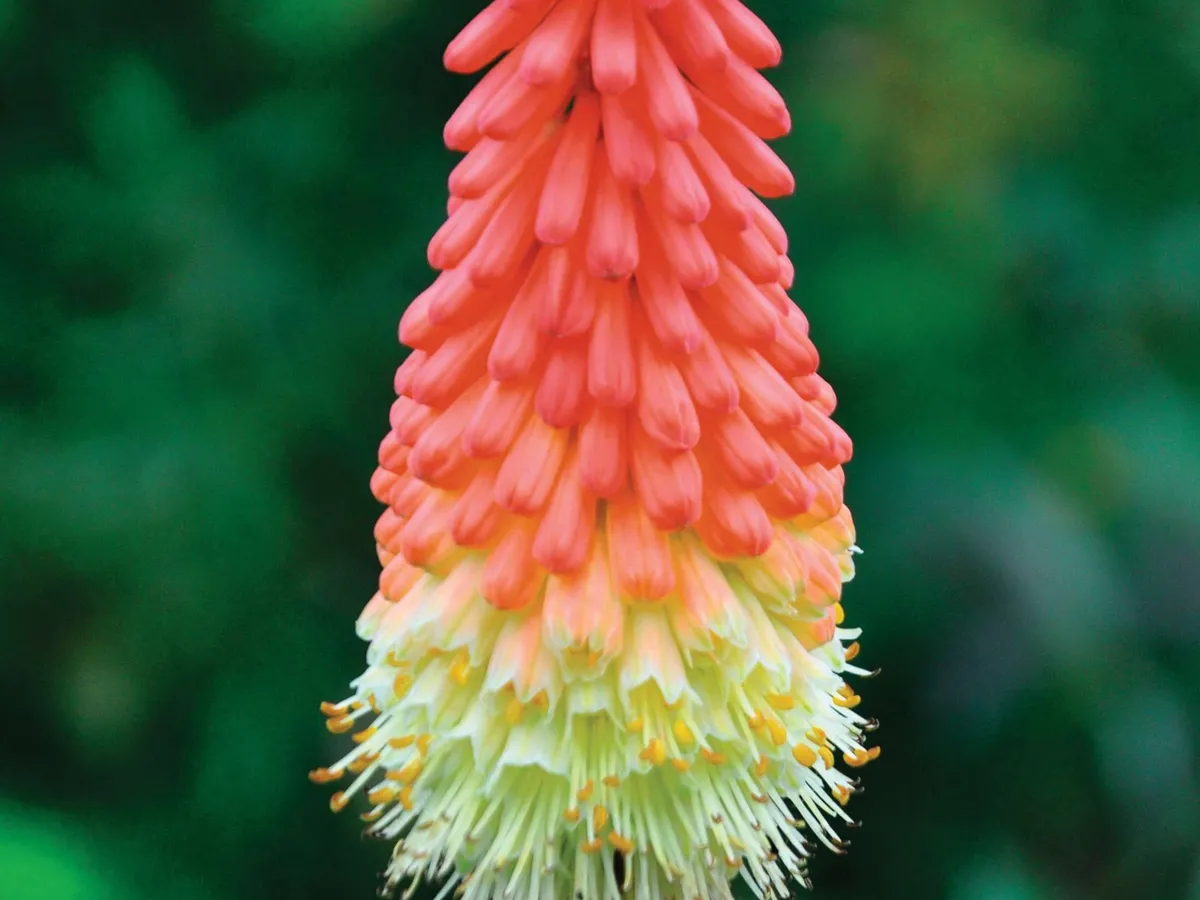
Large, eye-catching flower spikes in brilliant red and yellow, produced from early summer to early autumn. 90cm x 50cm. RHS H5.
Echinacea pallida ‘Hula Dancer’
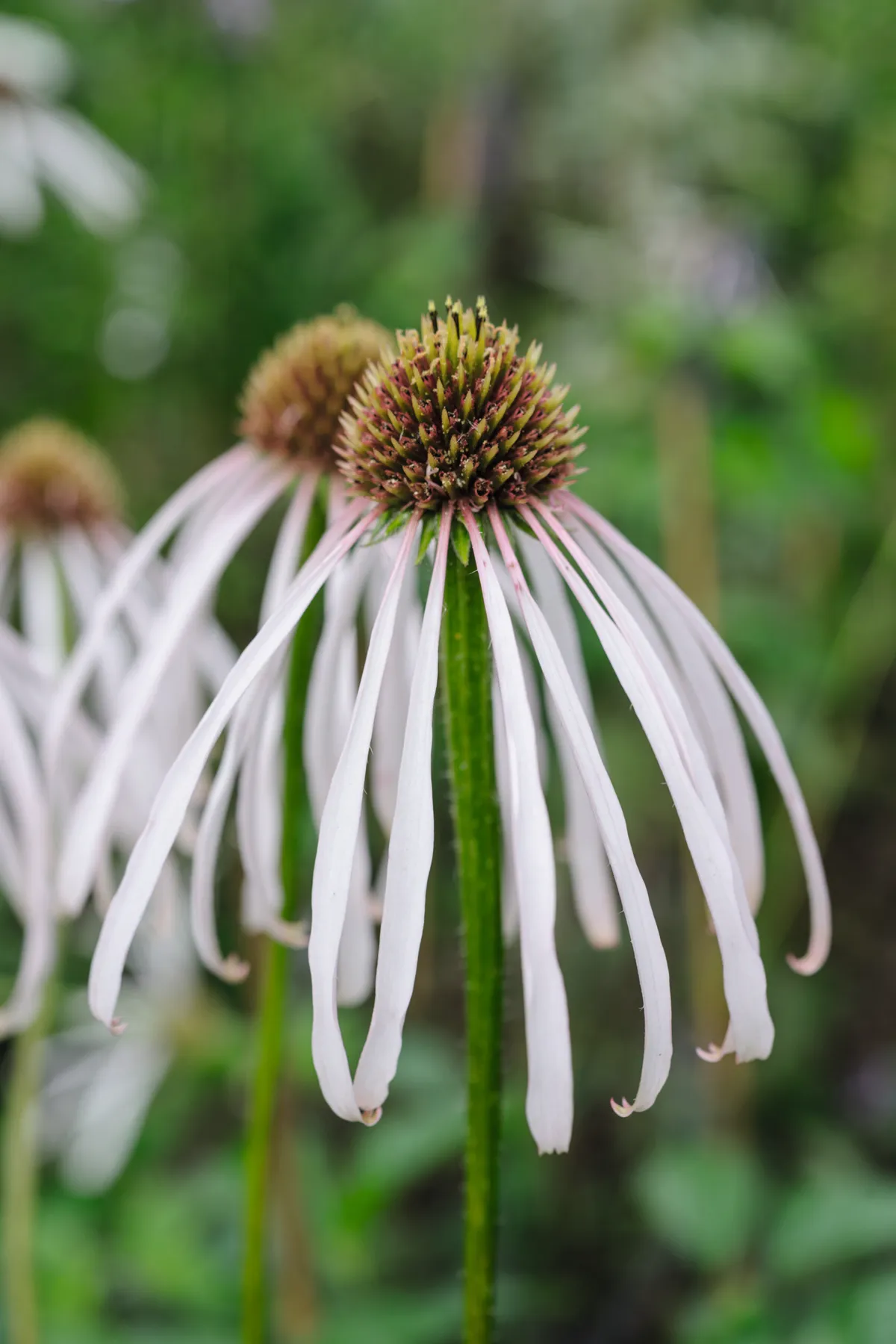
A hardy evergreen perennial with pink-flushed, reflexed flowers that have a light scent. 75cm x 50cm. RHS H5, USDA 3a-8b.
Berkheya purpurea ‘Zulu Warrior’
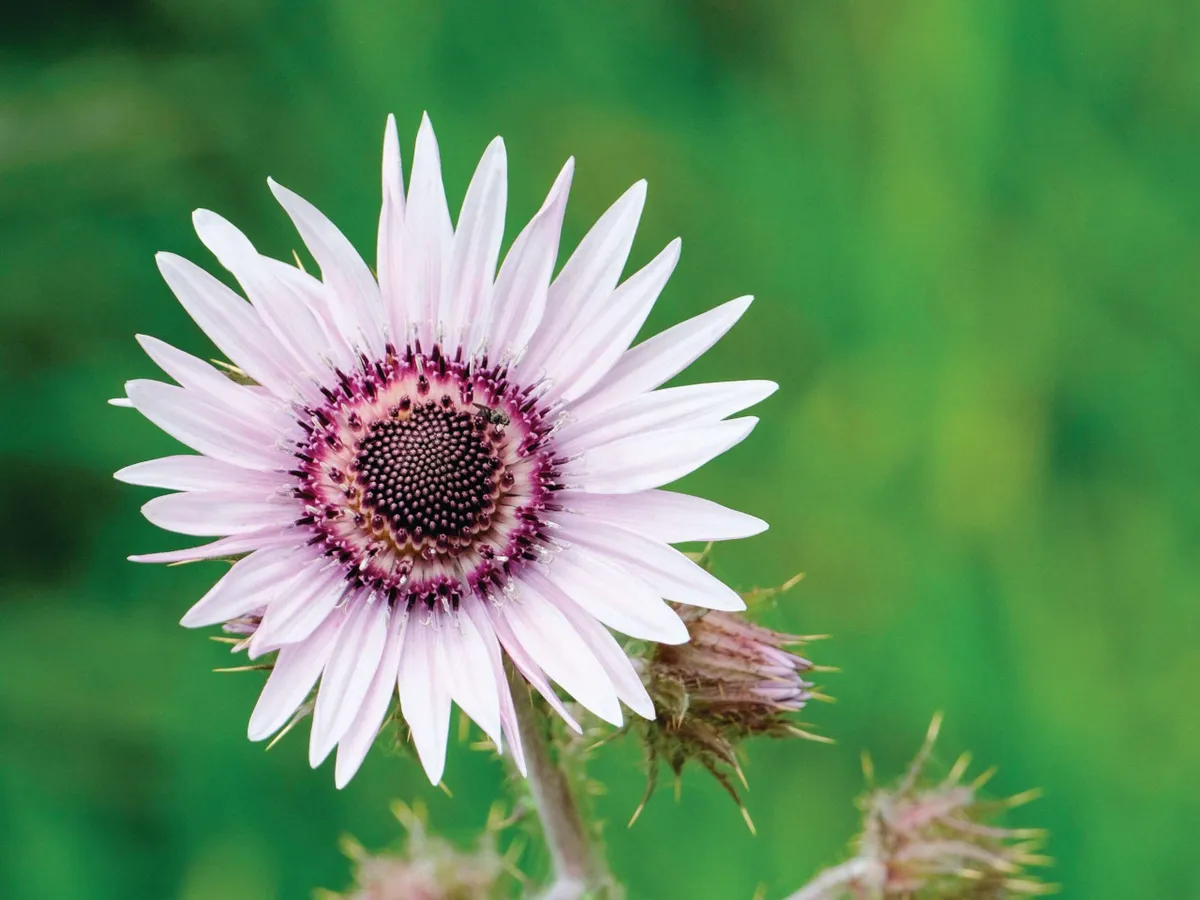
Thistle-like perennial that bears silver-blue flowers with dark-purple centres in summer. 90cm x 50cm. RHS H4.
Rudbeckia occidentalis ‘Green Wizard’
Unusual, statuesque perennial. The central chocolate-brown cone is surrounded by green phyllaries, giving the impression of a green flower. 1.8m x 1.8m. RHS H7, USDA 3a-9b.
Foeniculum vulgare ‘Purpureum’
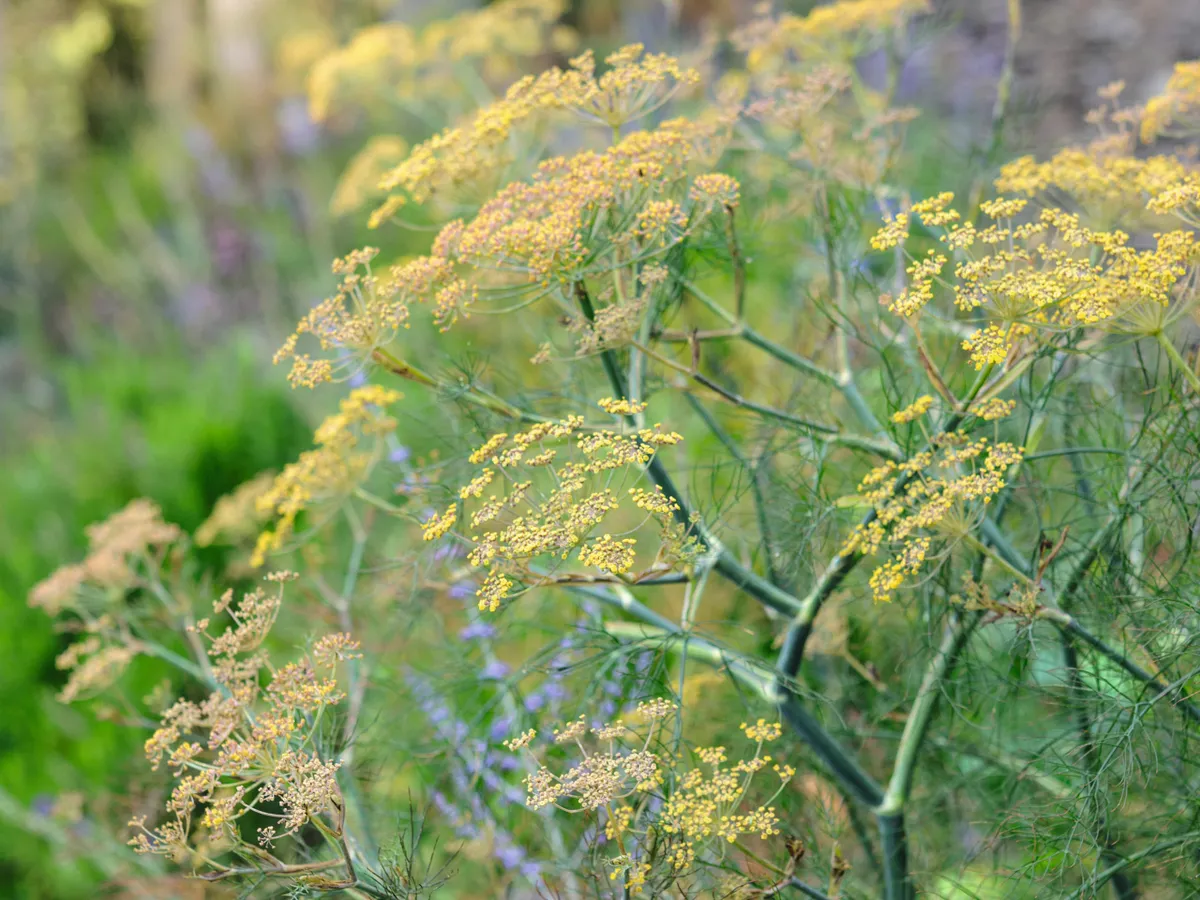
Upright perennial with finely divided foliage that is tinged purple when young. Flat, yellow flowerheads in summer. 1.8m x 1m. RHS H5, USDA 4a-9b.
Hymenoxis hoopesii
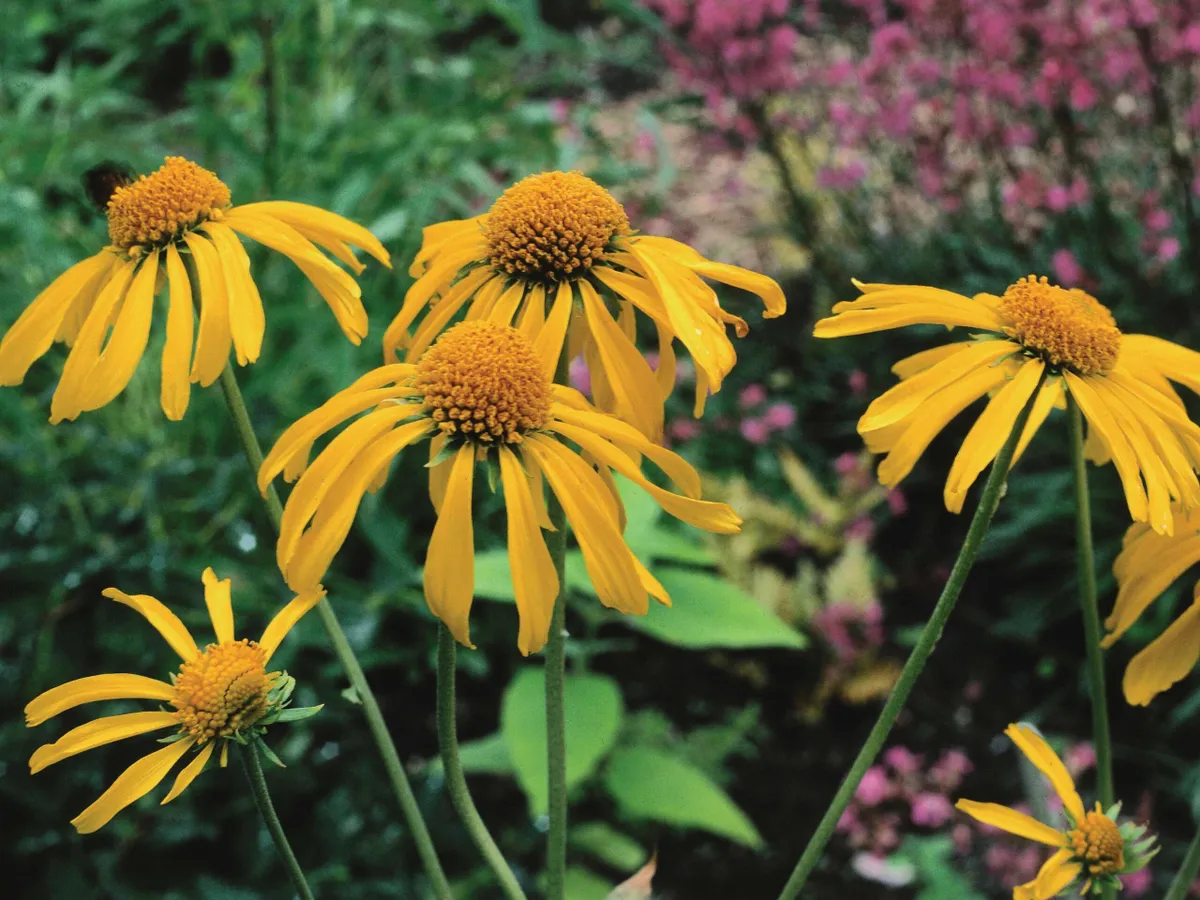
Golden-yellow petals around a darker cone. Flowers May to September. 90cm x 50cm. RHS H5.
Ratibida pinnata
Flower petals droop attractively around a central dark cone in high summer. 1.2m x 50cm. RHS H6, USDA 3a-8b.
Silphium laciniatum
Very tall perennial with large, deeply cut leaves and yellow, daisy-like flowers in summer. 3m x 1m. RHS H7, USDA 3a-8b.
Heuchera villosa ‘Autumn Bride’
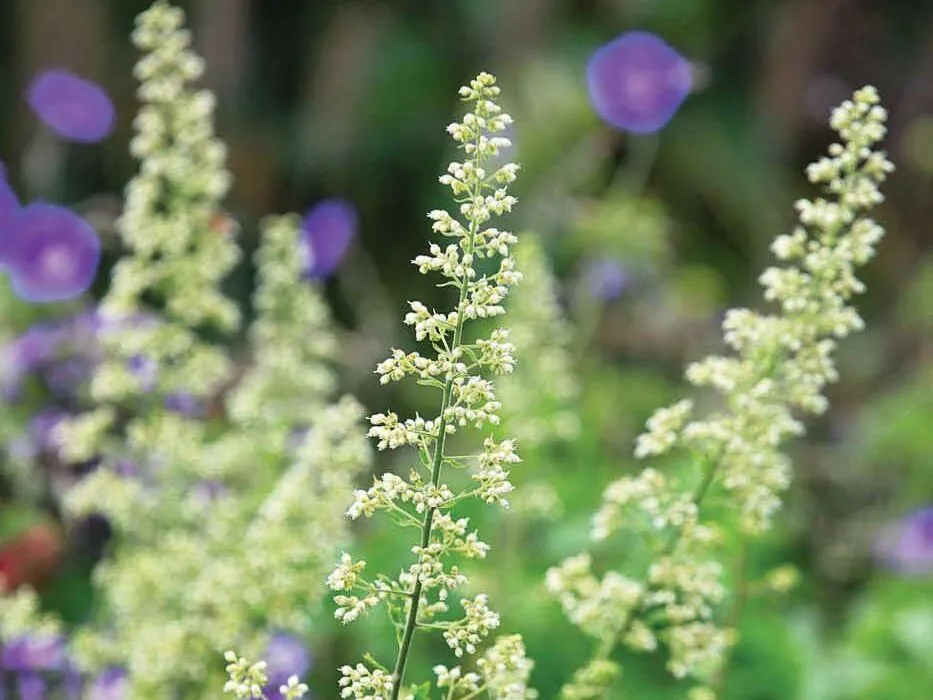
Large, fresh-green leaves and panicles of white flowers in late summer and autumn. 50cm x 50cm. RHS H6, USDA 3a-8b.
Coreopsis ‘Sterntaler’

Masses of bright-yellow flowers with a central brown-red circle in summer. 60cm x 50cm. RHS H5.
Sanguisorba officinalis
An upright perennial with grey-green leaves. Bears clouds of small red-brown flowers from early summer to mid-autumn. 1.2m x 50cm. RHS H7, USDA 4a-8b.
Find out more about sanguisorba.
Oenothera biennis
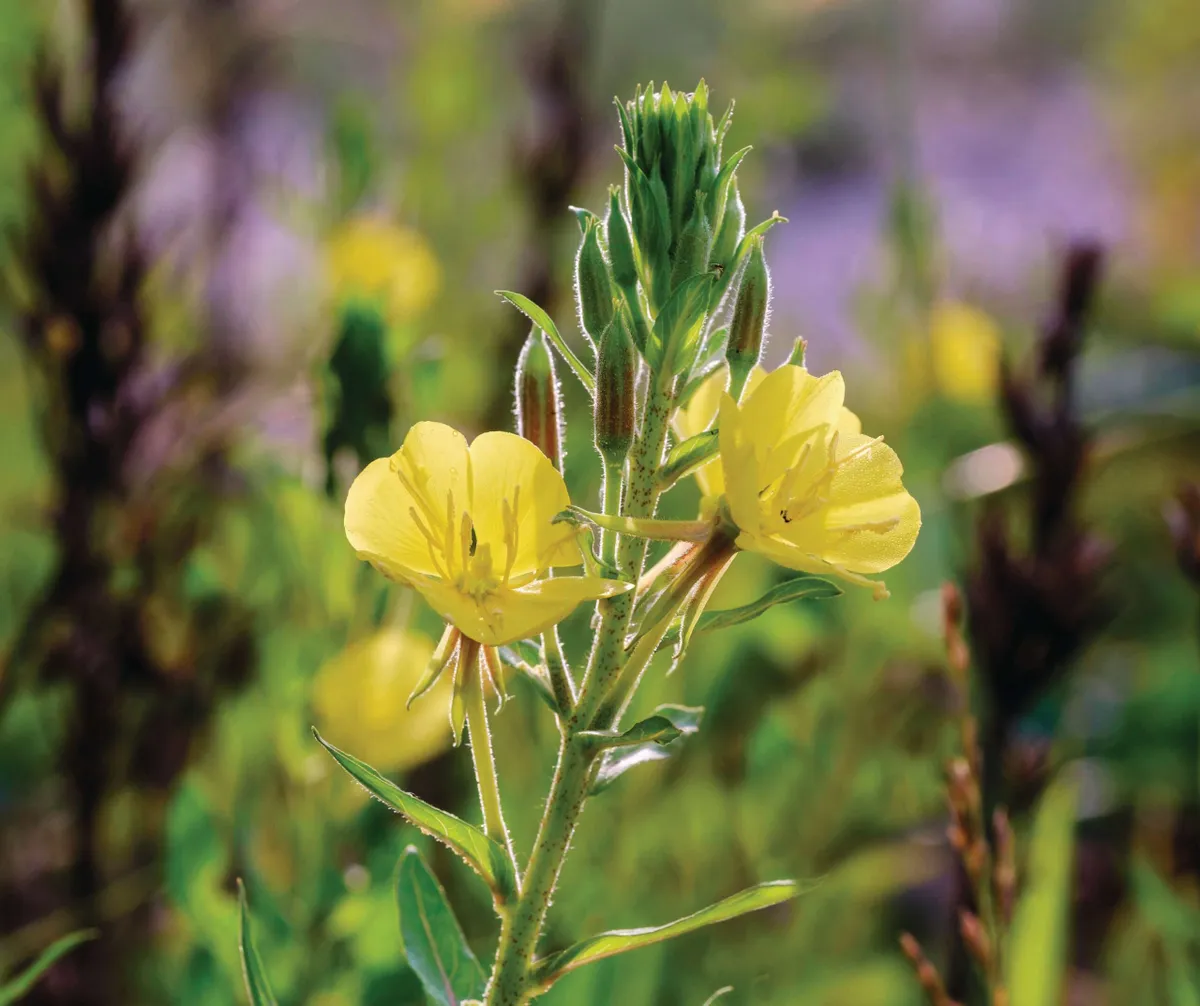
The pale-yellow flowers of the evening primrose open in the evening in summer and autumn. Biennial. 1.5m x 50cm. RHS H7, USDA 4a-9b.
Bouteloua gracilis

Unusual deciduous grass with brush-like flowers. Also known as mosquito grass. 60cm x 50cm. RHS H6, USDA 3a-10b.
Calamagrostis brachytricha
Clump-forming grass with purple-tinged, silver-grey flower plumes. 1.5m x 1m. AGM. RHS H6, USDA 4a-9b.
Symphyotrichum novae-angliae

Vigorous aster with abundant sprays of large flowers well into autumn. 1.7m x 90cm. RHS H7, USDA 4a-8b.
*Holds an Award of Garden Merit from the Royal Horticultural Society.
Download our document with the exact seed quantities you need